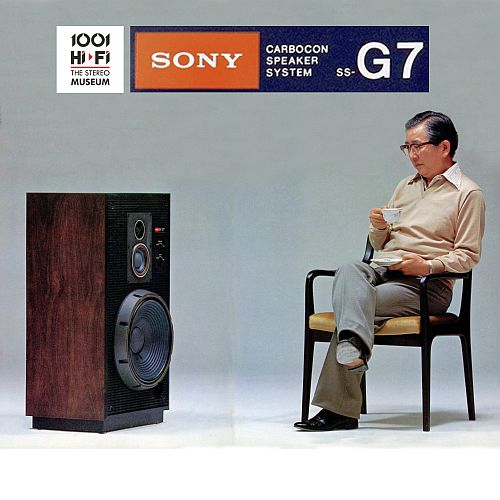restorer-john
Grand Contributor
I came across this image from a Sony advertisement from around 1976 or so.

The man seated, is of course a young Heitaro Nakajima (R.I.P.), head of Sony's audio at that point, extremely proud of his baby, the SS-G7, a monumental undertaking where Sony purpose built a brand new pulp processing and complete driver factory along with amazing acoustics laboratories specifically to produce the world's best speakers.
I've owned several pairs from the 'carbocon' series over the years and a pair of those SS-G7s which now reside with my best friend in his main system. An amazing speaker for the era and still today.
Who can translate the Japanese for me?
calling @dualazmak ?
Here's another picture:

The standard of fit and finish leaves modern speakers looking pretty poor on the whole:

The man seated, is of course a young Heitaro Nakajima (R.I.P.), head of Sony's audio at that point, extremely proud of his baby, the SS-G7, a monumental undertaking where Sony purpose built a brand new pulp processing and complete driver factory along with amazing acoustics laboratories specifically to produce the world's best speakers.
I've owned several pairs from the 'carbocon' series over the years and a pair of those SS-G7s which now reside with my best friend in his main system. An amazing speaker for the era and still today.
Who can translate the Japanese for me?
calling @dualazmak ?
Here's another picture:

The standard of fit and finish leaves modern speakers looking pretty poor on the whole:

Last edited:


